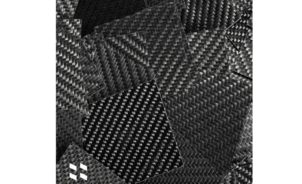According to McKinsey&Company, “digital-twin technologies drive revenue increase of up to 10% and improve product quality by 25%.”
In manufacturing, ample attention is given to consistency, optimization, and safety. Teams are always on the lookout for an “optimal batch” or “a perfect run.”
Digital Twin (DT) is the tool that helps us meet the new realities of software-driven manufacturing products and processes.
What is a Digital Twin?
Beginner’s definition: Digital Twin is a virtual counterpart of a physical object. Digital twins (DT) are used for replicating many real-world items and their functionality, features, and behavior.
In the manufacturing industry, for instance — it virtually replicates a warehouse, factory, machinery, product, or system. Smart sensors collect data from the object’s physical environment in real-time to draw digital representations that can be used across the organization.
Digital Twin (DT) Applications in the Manufacturing Industry:
1 – Orange’s Digital Twin for optimized production:
Orange’s (telecommunication services) DT platform addresses several use cases like tracking, recycling, and maintenance, making their production more reliable and cost-effective.
In the industrial fabrication of electrical panels — Orange uses synchronization between the partially assembled physical panel and the many digital twins linked together on a graph-based platform updated according to the events received from smart tracking.
This synchronized mechanism allows for scheduling the assembly of the electric panel on the production line, authorizing (or not) further assembly, scanning for missing components, performing a quality check, and so on.
The insights from the system help this multinational corporation to take targeted measures in optimizing the manufacturing workflows, thus improving product quality and delivery time.
2 – Unilever’s Virtual Twin for Cutting its Environmental Footprint:
Unilever’s laundry detergent factory in Brazil was recognized by the World Economic Forum for integrating the latest technologies to reduce its environmental footprint.
They were able to reduce the plant’s emissions by 96% and energy consumption by over 50% by setting up a Digital Twin that allows for predicting optimal process parameters for new formulations.
In addition to this, they were able to reduce maintenance costs, maximize machine availability, and improve inventory and shipping service by using real-time data.
3 – Scaling technology with Fairmat’s Digital Twin:
Fairmat relies on its state-of-the-art technology for processing tons and all types of carbon fiber composite waste received and its optimal and sustainable repurposing.
Fairmat’s technology is scalable because it heavily relies on Digital Twin and Machine Learning capabilities to optimize the production process, product development, and product performance.
The digital twin allows Fairmat to have absolute traceability and develop custom characteristics & functionality of the carbon fiber composite materials (CFRP). Fairmat uses DT for simulations and collecting real-time data, performance analysis, and product optimization during the design phase to meet customers’ specific material needs.
Traditional mechanical recycling for composites yielded only 5% more performance than the original material. Today with this technology, Fairmat was able to get close to 70%.




